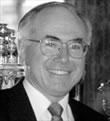At the Council of Australian Governments (COAG) meeting on 10 February 2006 this year, the Premiers, Chief Ministers and I agreed on the need to work on reforms to Australia's health workforce and to address workforce shortages. This followed a report commissioned by COAG and prepared by the Productivity Commission on Australia's health workforce.
As part of this work, I am pleased to announce that the Commonwealth will invest around $250 million over four years to train more doctors and nurses. The Commonwealth will fund 400 new medical school places a year, with some of the new places commencing in 2007 and the full 400 available by 2009. I make this announcement today so that universities can prepare to introduce these places without delay, especially given that it will take some years before graduates from the new places will be ready to work in our health system. A proportion of the new medical places will be bonded to areas of workforce shortage.
Victoria will receive more medical school places than other states and territories because it has a significantly lower proportion of medical students on a population basis. 120 places will go to a new medical school at Deakin University, and 40 places will be delivered through a new Gippsland branch of Monash University's medical school. In addition, the Commonwealth will provide one off capital grants of up to $18 million to Deakin University and up to $5 million to Monash University, subject to matching funding from the Victorian Government, to enable these universities to establish the new facilities required. I am particularly pleased to announce the medical school at Deakin University which will ensure the development of a strong rural and regional medical workforce throughout the western Victorian region. Deakin University will also train its students in a range of settings, including both public and private hospitals. Deakin University will work in partnership with the University of Ballarat, enhancing that university's expertise in health sciences.
The remaining 240 new medical school places will be distributed among the states and territories, including Victoria.
The largest single group in our health workforce are nurses. But nurse shortages are a problem nationwide. The Australian Government will fund 1000 new higher education nursing places a year, commencing from 2007.
To help nurses be better prepared for work in hospitals and other settings, the Commonwealth will also increase its contribution towards the cost of nurses' clinical training from about $690 to $1000 a year per full time student for all existing and new student places.
These new medical and nursing places will be in addition to the 2800 growth places across all disciplines that will be allocated this year and commence in 2007 as part of Backing Australia's Future. They are also on top of the 246 new medical places available from 2005 as part of Strengthening Medicare, which alongside other initiatives will result in a more than 60 per cent increase in the number of medical graduates from 2005 to 2011. In addition, on 5 April 2006, I announced 420 additional mental health nursing places and 200 clinical psychology places as part of the Commonwealth's contribution to the COAG mental health package.
I welcome the Victorian Government's statement on 30 March 2006 that it will ensure there is adequate funding for clinical and intern places in hospitals. I call on all of my colleagues in the states and territories to match the Commonwealth's contribution to strengthen Australia's health workforce, through guaranteeing clinical placements for all students in Commonwealth-funded higher education places in medicine and nursing, and investing in new vocational and technical education places for enrolled nursing and other health disciplines, such as care assistants and Aboriginal health workers.
The Commonwealth recognises the importance of ensuring that Australia's health workforce continues to develop to meet the changing needs of the community. My Government will work with the states, territories, private sector service providers and health professions to identify ways the health workforce can better provide care that meets community needs. As part of this, the Commonwealth will, with the states and territories, consider the proposals from the Productivity Commission, including those on registration of health professionals, accreditation of health education and training and specialist clinical training. It is important that we work together in the national interest to address these challenges.
I am also very interested in discussing with the states and territories and private sector providers ways in which we can improve clinical training for medical specialists. For example, we need to ensure that in specialties such as pathology and dermatology, where most of the work is now done in the private sector, there are suitable training arrangements in place. Governments will also need to ensure that there are sufficient and appropriate specialist training opportunities available in the public sector.
I look forward to working with Premiers and Chief Ministers to deliver a package at COAG that provides Australia with a stronger health workforce system that will better meet the needs of the community into the future.

